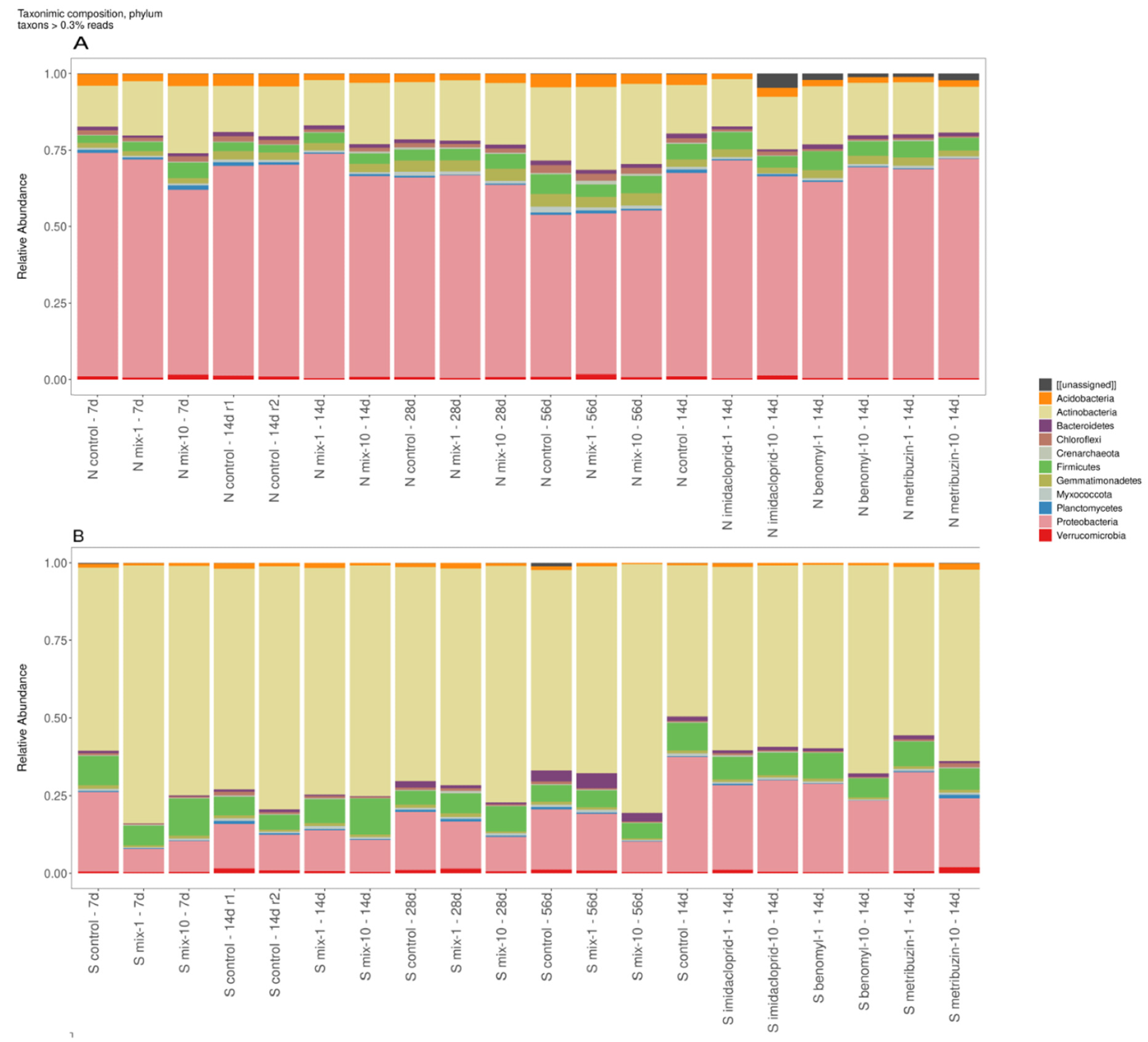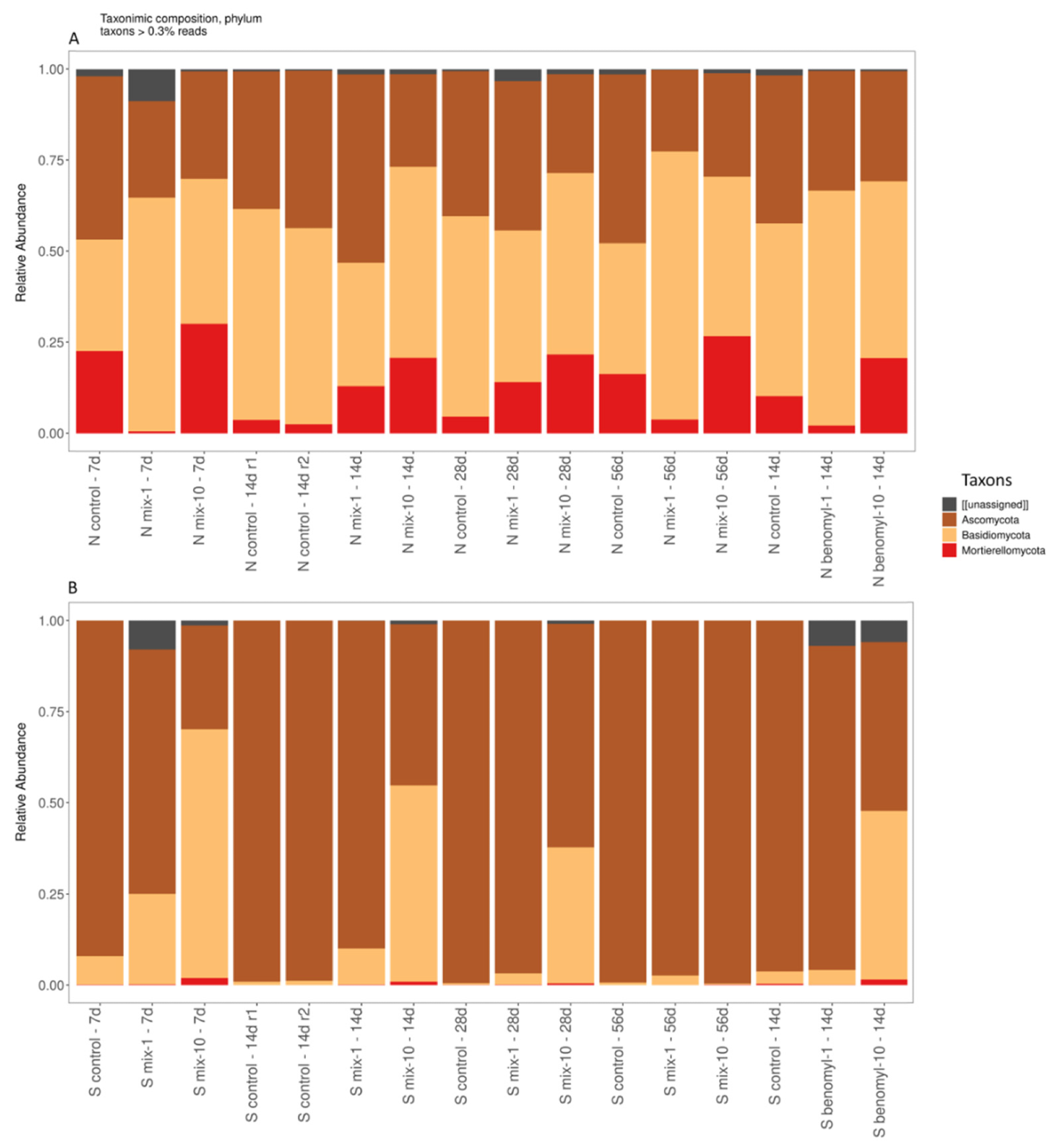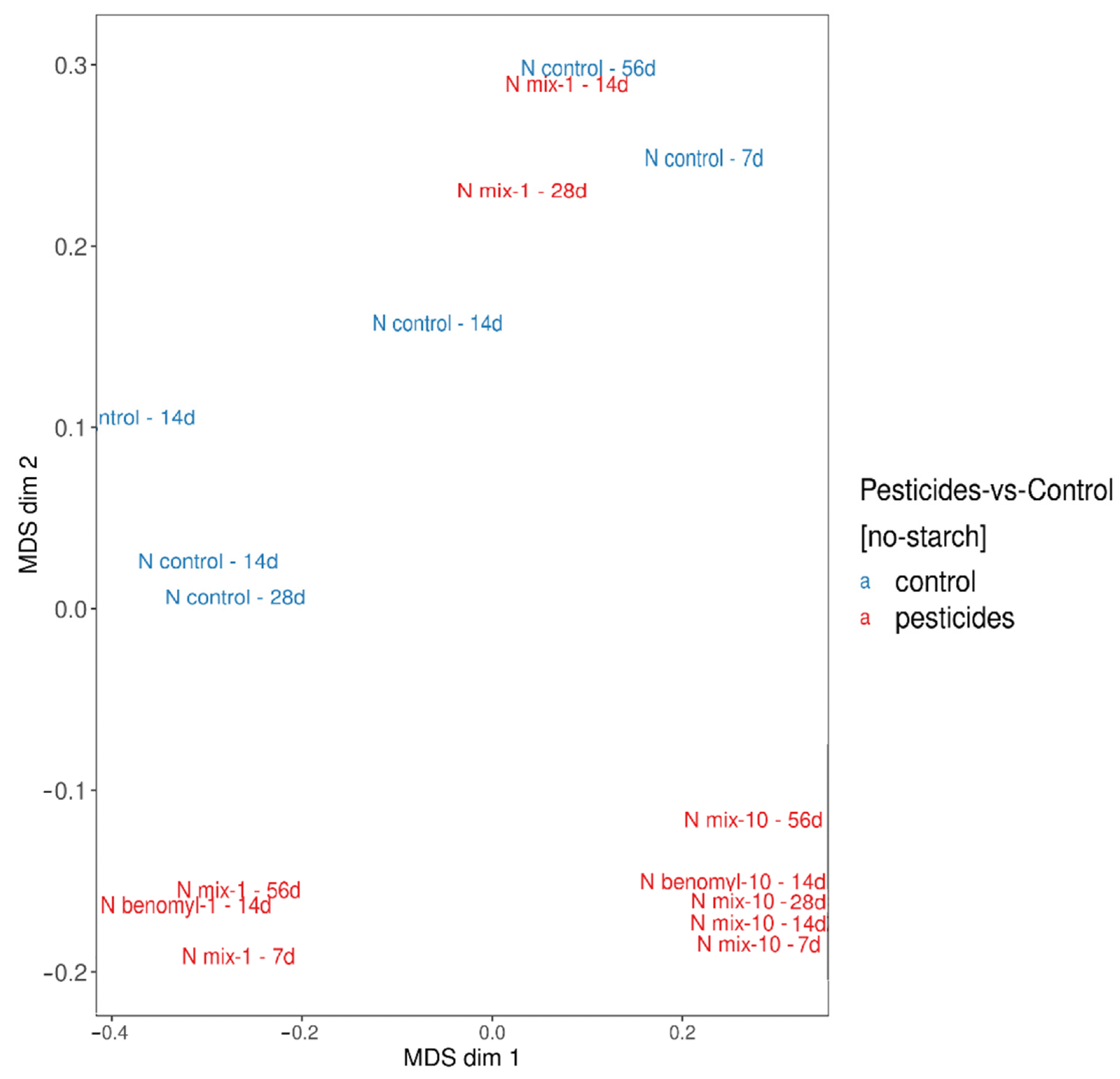.jpg) By Susha Cheriyedath, M.Sc.Reviewed by Skyla BailyJan 13 2022
By Susha Cheriyedath, M.Sc.Reviewed by Skyla BailyJan 13 2022In an article recently published in the journal Agronomy, researchers investigated the changes in the bacterial and fungal communities in the soil after treatment with pesticides like imidacloprid, benomyl, and metribuzin. A starch-mineral mixture (SMM) was added to the pesticides to study the additional stimulation of micro-organisms.

Study: Changes in Bacterial and Fungal Community of Soil under Treatment of Pesticides. Image Credit: maxbelchenko/Shutterstock.com
High-throughput sequencing on the Illumina MiSeq platform of the V4 16S rRNA and ITS1 18S rRNA fragments was performed on all samples to establish characteristic changes in the bacterial and fungal communities present in the soil.
Molecular Genetic Methods to Study the Effect of Pesticides
Classical methods including the use of integral indicators such as soil respiration, nitrification, and microorganism seeding on solid media have been used to study the effect of pesticides. Insecticides like DDT and aldrin did not affect nitrogen fixers, nitrifiers, ammonifiers, sulfur-oxidizing bacteria and led to an increase in the number of bacteria in the soil.
Molecular genetic methods like genetic fingerprinting have helped increase the quality and volume of the data. The structural changes in the microbes were identified using a polymerase chain reaction-denaturing gradient gel electrophoresis (PCR-DGGE) technique with DNA and cDNA fragments.
For example, the analysis of phylotypes based on the 16S rRNA genes of the total soil DNA revealed the significance of the insecticide methyl parathion in studying the change in the phylotypes. The results of the amplification of the V4 16S rRNA region followed by temperature gradient gel electrophoresis (TGGE) and band sequencing show that carbendazim, a fungicide, reduces the microbial diversity, expressed in the form of the Shannon index.
High throughput sequencing and taxon exclusive analysis was used to assess the soil microbial community. Soil contaminated with organochlorine pesticides (OCPs) is used in the bioremediation of pollution. Under the influence of OCPs, some species are absent in the soil, and their absence will serve as markers of contamination.
A multilevel approach is used to assess the effect of pesticides and it involves the analysis of fatty acid, enzymatic markers, followed by qPCR for individual phylogenetic groups. This study aimed to identify the most sensitive taxa under the effect of pesticides.

Bacteria’s phyla in all variants of the experiment without SMM (A) and with SMM (B). Image Credit: Streletskii, R et al., Agronomy
Observations
The alpha diversity study showed that the pesticides did not affect the alpha diversity of the soil bacterial community, irrespective of the addition of SMM and without SMM. In general, the reaction is significantly different in the variants with or without SMM. This is because the addition of starch leads to change in the microbiome structure and it degrades at a slower rate compared to glucose.
However, at the genus level, there is a decrease in diversity with the addition of SMM. The taxonomy structure study revealed that the addition of SMM led to a decrease in the diversity of bacteria and an increase in the percentage of hydrolytic bacteria like actinobacteria.
The participation of these bacteria in the breakdown of pesticides also explained the rise in the Terrabacter species. An increase in the relative abundance of Kitasatospora and Streptomyces was observed upon treatment with pesticides. The relative abundance of Burkholderia and Mycobacterium decreases under the influence of pesticides, regardless of SMM.

Fungi’s phylum in all variants of the experiments without SMM (A) and with SMM (B). Image Credit: Streletskii, R et al., Agronomy
In fungi, ascomycetes and basidiomycetes showed different results based on the variants with SMM and without SMM. Treatment using pesticide with and without SMM reduced Ascomycetes; however, with the SMM addition, increases in Basidiomycetes were observed. The results showed that the impact of pesticides on fungi was significantly higher with the addition of SMM at the phylum level.
Under the influence of pesticides without SMM addition, the yeast fungi of the genera Apiotrichum and Gibberella were found to be susceptible. An increase in the proportion of yeast fungi was observed and this is due to the decrease in the representation of other species in its surrounding environment. The starch decomposes to form glucose and is readily acquired by copiotrophs, and the addition of SMM increases the relative representation of the genus Apiotrichum.

MDS plot representing the beta diversity of fungal community compositions (at genus level) in soil samples (without SMM) treated with pesticides (red) and control ones (blue). Samples treated with 10× application rate concentration form a separate cluster, distant from the other samples. Image Credit: Streletskii, R et al., Agronomy
Conclusion
The analysis of the microbial community structures using 16S and 18S rRNA gene sequencing offers information only about the relative proportion of various microorganisms, while the absolute content of the microorganisms in different samples varies with SMM and without SMM can vary significantly.
Further research needs to focus on different carbon sources to establish optimal conditions in experiments. The variations in the relative abundance of the Terrabacter, Kitasatospora, Streptomyces, Sphingomonas, and Apiotrichum genera can be an indicator of pesticide contamination. According to the authors, these indicators can be used for large-scale assessment of the impact of pesticides on soil microbes instead of using classical integral methods.
Disclaimer: The views expressed here are those of the author expressed in their private capacity and do not necessarily represent the views of AZoM.com Limited T/A AZoNetwork the owner and operator of this website. This disclaimer forms part of the Terms and conditions of use of this website.
Source:
Streletskii, R.; Astaykina, A.; Krasnov, G.; Gorbatov, V. Changes in Bacterial and Fungal Community of Soil under Treatment of Pesticides. Agronomy 2022, 12, 124. https://www.mdpi.com/2073-4395/12/1/124/htm